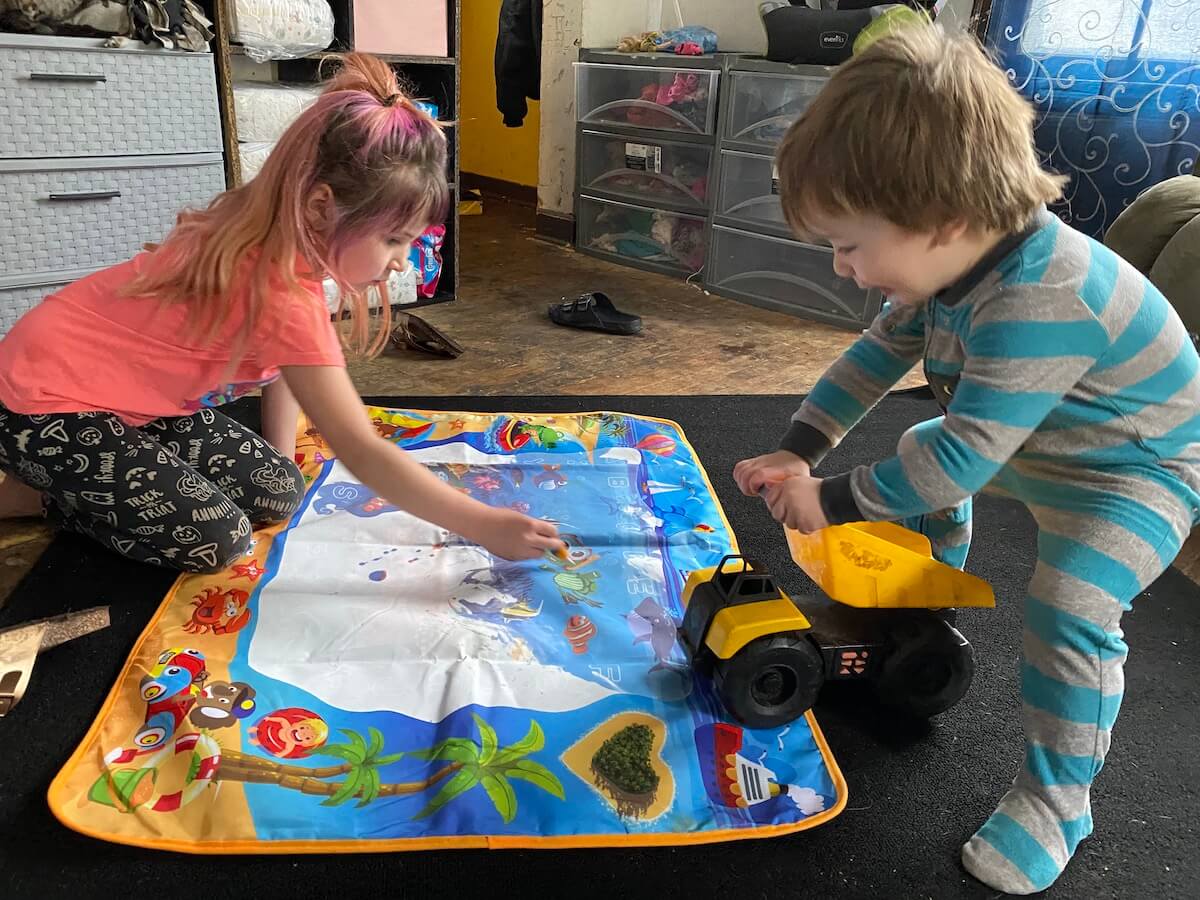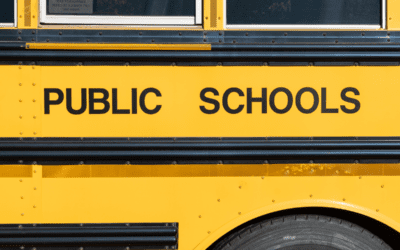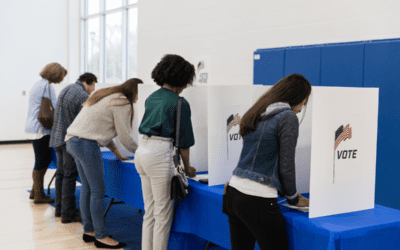
#image_title
This approach, which includes a “revolutionary” expansion of the child tax credit, is likely to boost the economy more effectively than Trump’s coronavirus response signed one year ago, economists say.
Emily Shields was grateful for the stimulus checks she received last year as part of the federal CARES Act, money that helped her pay for such basic living expenses as food and transportation as she struggled to stay afloat financially during the coronavirus pandemic.
But Shields, a single mother of four who lives in Eau Claire, would see a larger, more direct benefit from the American Rescue Plan (ARP) which President Joe Biden signed into law two weeks ago.
Under the direct payment stimulus, she is set to receive not only $1,400 for herself, but also $1,400 for every dependent child. Plus Shields’ family would receive $13,800 this year as part of an increase in the per-child tax credit from $2,000 to $3,600 for each child under age 6 and $3,000 for kids ages 6-17.
“This is a big deal,” Shields said Wednesday. “It would help me pay for so many expenses, so many costs I have a hard time keeping up with now. It will make a real difference.”
At a virtual event last week to discuss the ARP sponsored by Opportunity Wisconsin and Citizen Action, Wisconsin Democratic Sen. Tammy Baldwin praised the Biden administration’s more direct approach for providing dollars to people most in need of assistance, and lauded provisions in the ARP intended to lift as many as 5 million out of childhood poverty.
“We’ve just passed a measure that could take half of all children currently in poverty out of poverty,” Baldwin said.
One year ago, Baldwin backed the $2.2 trillion CARES Act getting to people in need but was critical of the lack of oversight of the initial disbursement, much of which went to large companies that didn’t need it while small businesses went without and cash-strapped families experienced only fleeting relief.
Shields is among people who will benefit directly from the ARP. She lost two jobs during the pandemic and is currently only able to work part time providing in-home care to people facing physical and/or mental challenges because her 14-month-old baby daughter Bexley, who has a serious heart condition, requires frequent trips to Mayo Clinic in Rochester, Minnesota. Her son Ronnie, 5, also suffers from significant health issues and requires frequent medical attention as well.
Simply coming up with money to pay someone to watch her kids when she takes Bexley to Rochester is difficult, Shields said. She recently went a month and a half without a vehicle, and just learned the van she bought a month ago needs repairs.
“There are so many situations that come up that I just don’t have the money to pay for,” she said.
The impact of the expanded stimulus and child tax credit on the lives of Wisconsinites like Shields is why many experts have called the $1.9 trillion legislation the greatest attempt at tackling poverty in America in at least a half century. Tim Smeeding, an economist at UW-Madison, said the child tax credit program’s impact will be “revolutionary.”
“The refundable child tax credit could do, over time, for families with kids the same thing that the Social Security act did for the elderly back in 1935,” Smeeding said.
“Why shouldn’t we have this goal every day, pandemic or not?” Baldwin asked at the virtual event.
Trickle-Up vs. Trickle-Down
Economists generally agree that, in addition to helping those most affected by the pandemic, the ARP’s approach is likely to boost the economy overall more effectively than the CARES Act.
The CARES Act was based on supply-side economics, which was popularized in the 1980s as trickle-down economics by former President Ronald Reagan. Trickle-down theory posits that cutting taxes and providing financial benefits for businesses will prompt those businesses to put that money toward workers or expanding operations.
But Steven Deller, a professor of agriculture and applied economics at UW-Madison, said that after decades of research into the trickle-down model, the consensus among economists is that, at least in the short term, supply-side economics does not stimulate the economy nearly as effectively as giving money to people at or near the bottom of the economic ladder. This is because of the multiplier effect, which shows that an economy grows as long as money continues to circulate from person to person, from business to business.
“If you give a thousand dollars to a low-income household, they’re going to spend a whole a thousand dollars immediately,” Deller said. “But if you give a thousand dollars to a higher income family, they may sit on it, they may pay off some debt. They’re not going to get it into the economy right away. So what you end up with is, these direct payments have a bigger impact at the lower income level.”
While economists are mostly on the same page about trickle-down theory’s effectiveness, the same cannot be said about politicians.
“I think [CARES] is largely a reflection of a Republican approach as opposed to a Democratic approach,” Deller said. “I think the Republican approach was that there’s a lot of businesses that are hurting out there right now and we need to help them. And by helping those businesses, it will in turn, help their employees. And the Democratic approach is more, no, we need to help families. We need to help households.”

Smeeding said there was one advantage to the CARES’ approach: the speed with which CARES was able to help businesses shore up their finances.
“It was fast. It was immediate. We had to do something right away. Businesses were close to failing,” Smeeding said.
It was also passed at the beginning of the pandemic when politicians thought businesses only needed assistance to get through a short hibernation of economic activity until the pandemic was under control. Then it was presumed that activity would pick back up where it left off.
CARES Act dollars certainly helped business owners, farmers, and others stay in business during the economic slowdown because of the pandemic, said Nick Levendofsky, government relations director for Wisconsin Farmers Union.
“But we’ve learned so much since then about where those assistance dollars need to go. [The ARP] seems like it gets that assistance more directly into the hands of people in need,” he said.
Some CARES Act funding was gobbled up by large corporations that were doing well financially and didn’t appear to need that money. At the same time, many small business owners reported not receiving those dollars initially. In other cases, people facing economic struggles said they didn’t receive assistance at all.
But the targeted payments the ARP will provide seem likely to help more people more quickly, Levendofsky said. Funding such as $100 million to assist small meatpacking facilities hit hard by the economic slowdown last year, and $500 million to boost COVID-19 vaccination efforts, expand telehealth initiatives and provide reimbursement for lost revenue in rural areas seem likely to provide much-needed relief more directly.
Long-Term Relief
Smeeding pointed out that a lot of the direct assistance for families that was implemented with the CARES Act did help families stabilize over the short term. But those programs were allowed to phase out over the summer. Many of the ARP’s assistance programs, such as federal unemployment payments and paid leave programs, are set to run through September and some may be extended indefinitely.
The ARP programs could also potentially reach people the CARES Act didn’t. Smeeding is overseeing a research project working with the Somali refugee community in the Green Bay area, many of whom work in meatpacking plants. For one, many refugees share their residences with multiple families, so the stimulus checks and the child credits could make a huge difference.
“You’ve got enough money to buy a house, to make a down payment, or to just guarantee rent for a long time, or to get the kids in childcare,” Smeeding said. “This is revolutionary, and it’s aimed especially at those people at the bottom who were hard to reach before and weren’t eligible for the full credit before. So this is just amazing.”
The Trump administration implemented a “public charge” rule that said immigration officials could deny green cards to immigrants and refugees if they applied for FoodShare or unemployment. While the rule was vacated by the courts, it may have deterred some from seeking help during the pandemic.
Under the ARP, any caretaker of a child—whether they have a temporary status, are undocumented, or are a grandparent or relative—is eligible to receive those child benefits. Smeeding and his partners are trying to get the word out about the child credit to immigrant communities, who may have missed out on other benefits, so they’re able to take advantage of this one.
Another way in which both the CARES Act and ARP affected or will affect people’s day-to-day lives is that both bills provided critical funding to local governments.
The CARES Act largely filtered money through the state government but gave money directly to Dane County, Milwaukee County, and the city of Milwaukee in addition to Native American tribes. Wisconsin’s Department of Administration then set up various grant programs to dole money out the money.
With the ARP, money will go directly to counties and municipalities—and in the new bill’s case, that funding is greatly increased over the CARES Act. Lafayette County received about $630,000 in CARES Act funding from the state, but it is getting up to $3.23 million directly from the federal government after the ARP, according to a spreadsheet from Senate Democrats.
Both bills combined provided small communities with real opportunities for growth, said Kriss Marion, a Lafayette County supervisor.
“What I’m most excited about is the infusion of this money [that] should allow us to build for the future,” Marion said.
However, it’s “really not clear at all yet” how the ARP funds will be delivered, or what the money can be used on, Marion said. She said the $3.23 million earmarked for Lafayette County may end up being a maximum amount rather than the amount that truly is disbursed; the funding also appears to be geared more toward local economic recovery and expenses like broadband expansion rather than nuts-and-bolts infrastructure costs. Still, she’s optimistic about what the funds will do for Lafayette County.
“Between the two of them, we should be set up perfectly well for a nice period of growth,” Marion said.
Shields is hopeful as well that the future will be better for her and others struggling financially thanks to the ARP. “There are so, so many people out there like me, people who are struggling to pay their bills normally, and the pandemic made it worse,” she said. “This extra assistance, it really matters to us.”

Opinion: Many to thank in fair maps victory for Wisconsinites
On February 19, 2024, Governor Tony Evers signed into law new and fair state legislative maps, bringing hope for an end to over a decade of...

Opinion: Empowering educators: A call for negotiation rights in Wisconsin
This week marks “Public Schools Week,” highlighting the dedication of teachers, paras, custodians, secretaries and others who collaborate with...

Op-ed: Trump’s journey from hosting The Apprentice to being the biggest loser
Leading up to the 2016 election, Donald Trump crafted an image of himself as a successful businessman and a winner. But in reality, Trump has a long...

Not just abortion: IVF ruling next phase in the right’s war on reproductive freedom
Nearly two years after the US Supreme Court overturned Roe v. Wade, another court is using that ruling to go after one of the anti-abortion right’s...




